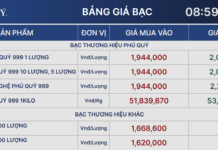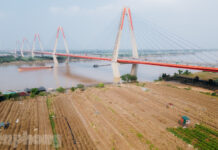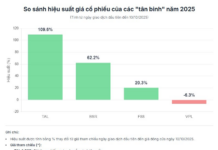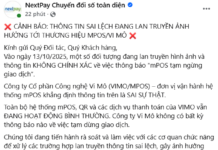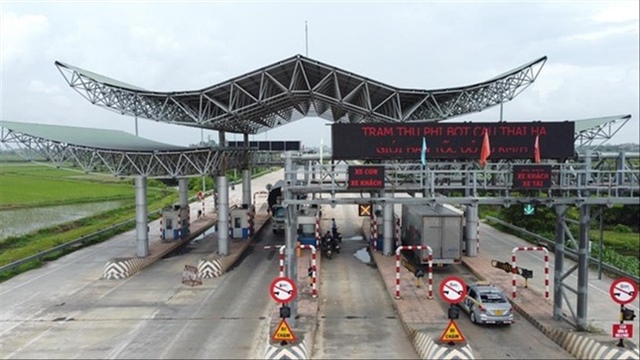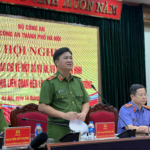Divide into 3 “disease” groups
According to information from the Ministry of Transport, basically, the current difficulties and obstacles mainly focus on projects implemented before 2015. These are projects that have been completed and put into operation but have not been charged fees, or cannot charge fees due to opposition from residents or projects that have been charged fees but the actual revenue is less than 30% compared to the financial plan of the contract…
In addition, some BOT projects are facing difficulties in mobilizing credit capital (such as the BOT project of building the coastal road in Hai Phong); difficulty in arranging state capital participation, land clearance, high and fluctuating interest rates, the ratio of state budget capital participation facing difficulties in attracting investors; there is no specific guidance for PPP projects being implemented, which have to stop implementation and switch to investment with state budget…
To solve long-standing difficulties, the Ministry of Transport proposed that the government find solutions to remove obstacles for 8 BOT projects in 3 groups. Specifically, the first group is to amend the contract, supplement the budget to support 2 projects with decreased revenue and no recovery capability, with a total capital needs of VND 1,557 billion.
|
“Using the budget to repurchase BOT projects will set a bad precedent for investors to continue implementing ineffective projects, shifting responsibilities to the State. The government needs to carefully consider this proposal, even if necessary, it needs to accept the pain once. In the event that the repurchase decision is implemented, the Ministry of Transport needs to explain and ensure that the projects will be effectively managed and operated to avoid further losses in the future,” said Mr. Le Thanh Van – Standing Member of the Finance and Budget Committee of the National Assembly. Mr. Le Thanh Van – Standing Member of the Finance and Budget Committee of the National Assembly |
Specifically, the Ministry of Transport proposed to supplement VND 522 billion for the Vietnam Construction BOT project of building the Viet Tri – Ba Vi bridge (Van Lang bridge). This project has a total investment amount that has been audited and settled at VND 1,088 billion. The expected payback period is about 22 years and the investor has agreed to reduce 50% of the profit on owned capital.
For the BOT Investment Project of Building the Thai Ha Bridge across the Red River (connecting Thai Binh and Ha Nam provinces with the Cau Gie – Ninh Binh Expressway), the Ministry of Transport proposes to supplement VND 1,024 billion for support, with an expected payback period of about 25 years.
The second group proposed by the Ministry of Transport is to adjust the state support mechanism. This solution applies to the BOT Construction Project of the road tunnel through Deo Ca. Accordingly, the Ministry of Transport proposes to allocate about VND 2,280 billion from toll revenue on the Hanoi Highway section from La Son to Tuy Loan to support the project. The expected payback period is about 28 years and 4 months. The La Son – Tuy Loan expressway will study the toll collection plan for the state budget.
The third group includes 5 projects: BOT Upgrading, Rehabilitating National Highway 91, Can Tho City (not allowed to collect fees at station T2), BOT Project of Building Thai Nguyen – Cho Moi Road and Rehabilitating, Upgrading National Highway 3 from Km75 – Km100 (not allowed to collect fees at National Highway 3 toll station); BOT Project of Upgrading, Expanding Ho Chi Minh Highway from Km1738+148 – Km1763+610 (Dak Lak province), BOT Project of Building Binh Loi railway bridge and rehabilitating Saigon River flow; Western Thanh Hoa City Belt Road Project from Km0 – Km6. For these projects, the Ministry of Transport proposes that the government allocate more than VND 6,810 billion to terminate the contracts before the deadline.
Ensure no additional losses
Mr. Le Thanh Van – Standing Member of the Finance and Budget Committee of the National Assembly believes that the state budget should not be used to repurchase BOT projects. According to Mr. Van, for BOT projects with losses, the first thing to consider is the responsibility of individuals and organizations involved in project planning, appraisal, and implementation decisions. In addition, there is no budget estimate for repurchasing BOT projects in the budget estimates for public investment and regular expenditure for socio-economic development, Mr. Van said.
“Using the budget to repurchase BOT projects will set a bad precedent for investors to continue implementing ineffective projects, shifting responsibilities to the State,” Van added. He also believes that the government needs to carefully consider this proposal, even if necessary, it needs to consider the solution to “accept the pain once.” In case the repurchase decision is implemented, the Ministry of Transport needs to explain and ensure that the projects will be effectively managed and operated to avoid further losses in the future.
According to Mr. Nguyen Huu Duc, a transportation expert, when a BOT project fails, the solution is usually for the parties involved in the project, including the government, investor, and banks, to share risks. However, the bank does not sign contracts with the government but stands behind the investor, so only the government and the investor remain to implement the project.
Mr. Duc believes that the difficulties of BOT projects being proposed to be cleared are due to the government, such as adjusting the planning. For example, along 5km of the Red River, flowing through the provinces of Ha Nam, Hung Yen, and Thai Binh, the functional agencies have approved the investment of the Thai Ha BOT bridge project, but continue to approve the investment of the Hung Ha bridge by ODA loans, leading people to choose to travel freely on the Hung Ha bridge instead of paying to cross the Thai Ha BOT bridge. Therefore, according to Mr. Duc, the government should find solutions to alleviate the loss to investors. In addition to the solution of repurchasing the project as proposed by the Ministry of Transport, it is possible to apply solutions such as extending the toll collection period, reducing taxes, credit incentives, or using other financial tools…
Duong Hung

